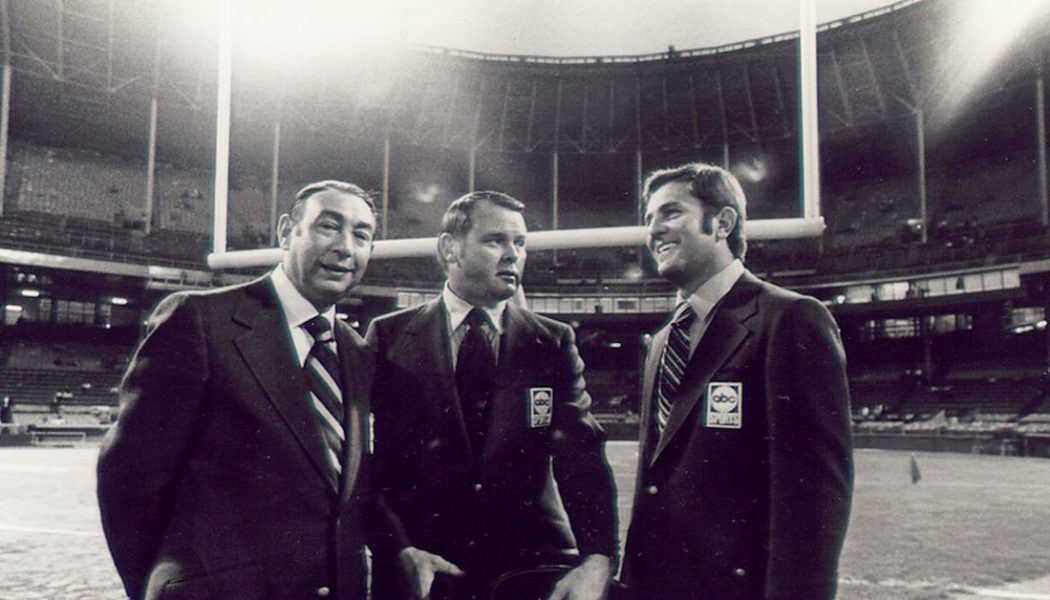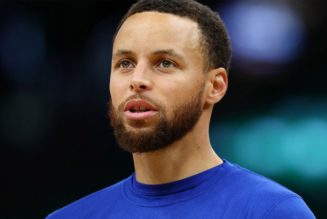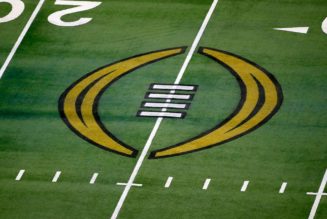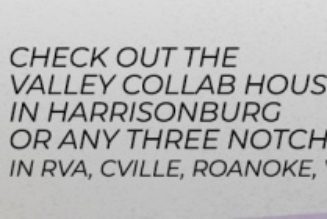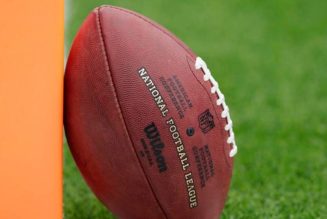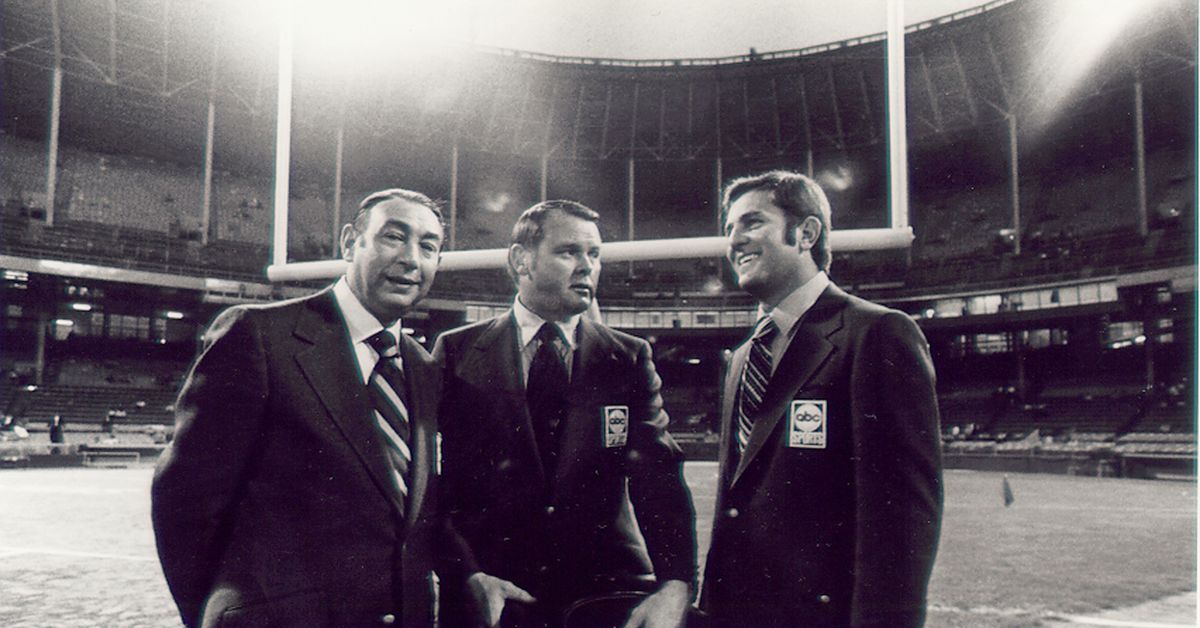
We recently cut the cord and went to streaming. I know, I know. I’m late to the party, which I usually am on all things technology. My children are all early adopters. I’m more of a technological luddite. Eventually, I come around, usually kicking and screaming. I protested mightily at giving up my flip phone for a smartphone, but now can’t imagine life without it.
The streaming has brought forth some nice surprises, one being a wide array of available games to watch. The other being a reintroduction to the television show Sports Night.
Sports Night was loosely based on the travails of ESPN and only ran for two seasons, from September 1998 to May of 2000. I used to watch most episodes as they were originally aired and was disappointed when the show was canceled.
The show had a cult following and mixed a nice combination of sports, drama and comedy. It was created by Aaron Sorkin, who later wrote and produced The West Wing and served as a writer on several high-profile movies.
The cast had great chemistry with Peter Krause and Josh Charles doing a bang-up job as the lead sports anchors and strong performances from actors such as Felicity Huffman, Robert Guillaume, Sabrina Lloyd, and Joshua Malina.
I love the tension the cast gives off right before the show goes on the air and the camaraderie of teamwork involved in each production. It’s hard to believe the show is over twenty years old.
Even though Sports Night is supposed to be loosely based on ESPN, specifically Keith Olbermann and Dan Patrick, I always thought the vibe was more on the lines of Nick Charles and Fred Hickman, the wonderful duo who anchored a can’t-miss show on CNN called Sports Tonight.
Sports Tonight came on at 10:00 (that’s PM not AM) and I made it a habit to stay up and watch Hickman and Charles. Remember, this was long before the internet. The first show ran in June of 1980 and the show went dark after the 9/11 attacks when CNN went to an all-news format. Hickman and Charles had remarkable chemistry and the show featured “the play of the day” which at that time was big medicine.
Sports Tonight was a great format to catch all the scores and highlights. It was followed at 10:30 on Sunday evenings by a show called George Michael’s Sports Machine. Yeah, I had to stay up and watch the Sports Machine too. Prior to the breakout of cable TV, there was just a huge void in sports programming and these two shows bridged the gap between the lean old days and what was yet to come with the advent of the internet. The closest comparison I can think of for The Sports Machine is maybe Jomboy? I’m sure you can find re-runs of Sports Tonight and Sports Machine on YouTube. On the Sports Machine, George Michael, the host, would introduce the clip then say something along the lines of “Let’s go to the machine!” and he’d hit a button on this contraption and Viola! the clip would run.
I would love for younger sports fans today to be able to go back in time to say 1975 just for one day to get a glimpse of how the entire sports media scene has changed. It’s really kind of mind-blowing. Back in the prehistoric days of 1975, NBC carried the baseball game of the week on Saturday afternoon. Then ABC countered with Monday Night Baseball, piggybacking off their massive success of Monday Night Football. When it came to football coverage, you had two games on Sunday to choose from, usually a noon NFC game and a 3:00 AFC game. On Monday night, you had the main event, Monday Night Football, with Howard Cosell, Frank Gifford and Dandy Don Meredith. That was it. Three games. And you liked it.
My dad and I never missed Monday Night Football. Before we had cable, we would take turns adjusting a pole that stood outside of our house and was topped by our television antenna. One of us would stick a metal bar through a hole in the pole and rotate the pole to get better reception (in all kinds of weather, usually cold) while the other stood in the open front door shouting “a little more. A little more! That’s it, stop! Perfect!”
Monday Night Baseball never quite took hold like football did, but the Saturday baseball game of the week was very popular. Sports fans today have it great. We can watch any game we choose and if you happen to miss it, go back and watch a re-run. You want stats? Opinions? Up to the minute news? The internet is chock full of that stuff.
If you wanted stats or to read about a certain player in 1975, your choices were limited. The Sporting News magazine was one of the premier publications, running in some form from 1886 to the demise of the printed version in 2012. It was stuffed full of stats and box scores of various sports, depending on the season. If you wanted to know who had the highest batting average or was leading the league in home runs, you bought a copy of The Sporting News.
The other big dog was Sports Illustrated, which came out every week and most recently met its demise. Sports Illustrated was THE magazine for sports fans. Anyone who wrote for SI knew they had made it as a writer. Or photographer. Sports Illustrated recapped the biggest stories of the week and was the holy grail of sports reporting.
There were other magazines as well. Sport magazine had a nice run. I still have a few old issues lying around. Street and Smith always put out a fine football and basketball issue. The outdoor magazines like Sports Afield and Field and Stream always did well.
For baseball fans the other big publication was Baseball Digest. I would often go to the local drugstore with whatever scratch I’d made that week mowing lawns or shoveling snow and pick up a copy. I would be extra thrilled if a Royal player happened to make the cover.
The other big difference over the years was back in those days, fans would often listen to games on the radio. I spent countless nights listening to Fred White, Bud Blattner, and Denny Matthews calling Royal games. I always loved hearing my dad tell the story of how he snuck a transistor radio into school so he could listen to the Brooklyn Dodgers play in the World Series. It was a much more innocent time. Today’s wall-to-wall coverage and the availability of advanced metrics has changed the way we look at sports and the athletes who entertain us. I’m not saying it’s worse, I’m just saying it’s different. I’ll always remember the shock I felt on Saturday December 23, 1972. I had gone to work with my father and late that afternoon we were sitting at a gas pump when a man ran up to the truck and said, “Hey, did you guys see the end of that Pittsburgh-Oakland game?”
Uh, no, we were working.
He then went on to describe the Immaculate Reception to us in amazingly accurate detail, each sentence adding to my angst of having missed one of the sporting world’s signature moments.
We had to wait for the ten o’clock news to see our first replay. Slow news.
I felt the same shock waves on the morning of October 31, 1974, when the school bus driver told me that Muhammad Ali had knocked out George Foreman the night before. The fight, which took place in Zaire, was not televised in the US. If it was on the radio, it would be out of my reach with the seven-hour time difference. Most sports fans viewed Foreman as indestructible. There was no possible way that Ali could win, yet he did. Over the next few days, you scoured the television and newspapers for any morsel of news regarding the fight. You traded stories with your friends, everyone sharing what they had heard and read. Slow news.
What does all of this have to do with the show Sports Night? After all, Sports Night only ran for 45 episodes. To me, the show was the final coda of the slow news universe. Change was already in the air before Sports Night even premiered and was in full swing when the show went off the air, even if we didn’t realize it at the time.
Marc Andreessen and Eric Bina released the web browser Mosaic in April of 1993 and suddenly the World Wide Web was open for business. Google released its search engine in 1998 and by June of 1999 it was performing 500,000 inquiries a day. By the end of 2011, that number had jumped to 3 billion a day. Today, Google performs 8.5 billion searches per day. We went from slow news to fast news almost overnight.
Newspapers and magazines, still wed to the print advertising dollar and the old ways, were slow to adapt to the rapid change that was occurring, thus hastening their demise. New outlets (Royals Review!) that didn’t have the capital to compete with brick-and-mortar media giants now had a platform and rapidly embraced it. Nowhere was this more evident than with Sports Illustrated.
I subscribed to SI for years, but eventually the magazine shrunk in size, the price went up and the stories they once dominated were already covered by internet sites. Slow news became old news. For several years I haunted the SI website, but eventually, that got to be such an unnavigable mess, that I walked away from it. That was tough, as I was a dedicated reader, especially of Peter King’s Monday Morning Quarterback piece. I was always flabbergasted that SI, a business that had the best sportswriters and photographers on the planet, could not find a leadership team to transition into the internet age. It was a sin, really.
For sports fans and sports information junkies, there has never been a better time to be alive, though some days I still miss the era of slow news.
Services Marketplace – Listings, Bookings & Reviews
